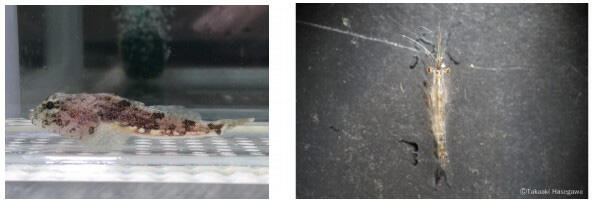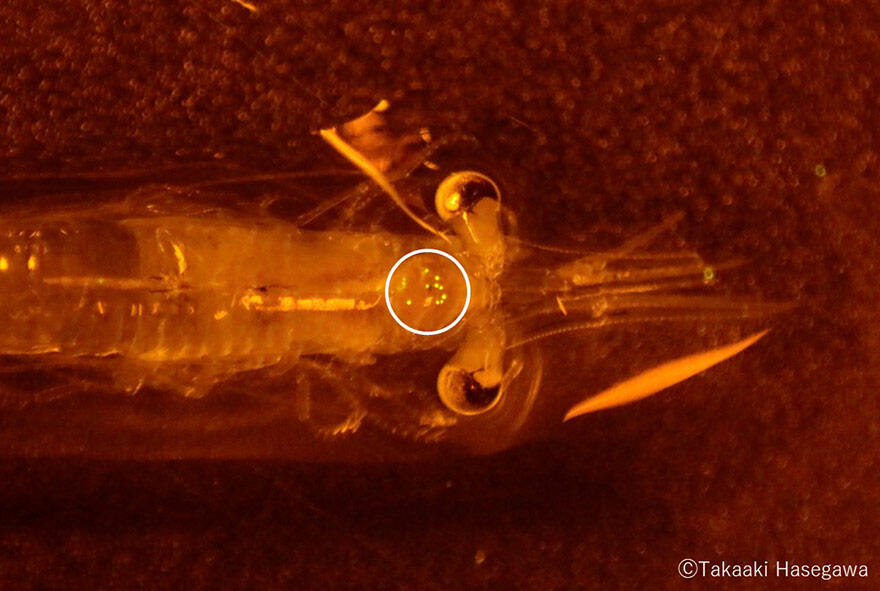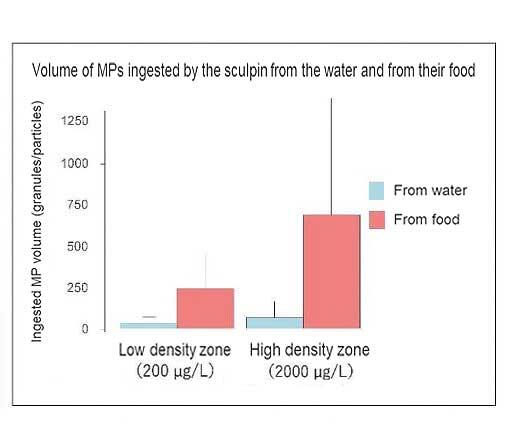An investigative research group at Hokkaido University has announced their findings that fish absorb more of the massive amounts of microplastics (MPs) found in fresh and sea water through their food than they do directly. Marine pollution caused by plastics has become a global issue, causing not only damage to marine life, but also posing a potential threat to human health through the consumption of seafood. The announcement is seen as offering important data on the impact of microplastics on the ecosystem via the food chain.
A research team led by Takaaki Hasegawa, a graduate student at the Hokkaido University Graduate School of Environmental Science, and Masahiro Nakaoka, a professor at the University's Field Science Center for Northern Biosphere, carried out an experiment using microplastics, a carnivorous fish indigenous to the area called the Shimofuri Kajika, or "marbled sculpin" (Myoxocephalus brandtii, "sculpin" below), and the Neomysis awatschensis ("neomysis" below) that is their source of food.

The research group used fluorescent polyethylene granules of roughly 30 micrometers in size as their source of microplastics, and divided the sculpin between one contaminated tank containing microplastics, where they were able to ingest the microplastics directly, and an uncontaminated tank without any microplastics, so that the sculpin could not ingest the microplastics directly. They then added neomysis that had ingested microplastics to the uncontaminated tank to examine the ingestion of microplastics by the sculpin in both tanks.

The experiment demonstrated that the sculpin ingested a greater volume of microplastics via their food source of neomysis than they did directly from the water. Specifically, the number of particles absorbed was between 8 and 11 times higher, with a volume 3 to 5 times higher. The microplastics are partially broken down after being ingested by the neomysis, making the particles ingested by the sculpin via the ingestion of neomysis smaller than when ingesting microplastics directly.

The research group asserts that not only do the microplastics transfer to body tissues after being broken down, potentially causing damage, those toxic materials also become more concentrated, potentially causing harm for consumers higher in the food chain, such as humans.
According to the research group, it was already known that in addition to direct ingestion of microplastics from the sea water, fish also ingested it via their food sources, but this was the first time the difference in volume between the two routes of ingestion was examined in detail.

Environmental white papers from Japan and international organizations warn that the total volume of plastic waste that is contaminating the oceans will exceed the total volume of fish by the year 2050. The ingestion of microplastics particles of 5 mm and smaller by a variety of marine life has already been reported, causing concern about the effects thereof on the ecosystem.
A white paper authorized by Cabinet Decision in June 2019 stated that, "The effect of microplastics on the marine ecosystem has become a concern in recent years, making it a global issue," and that while "6.3 billion tons out of the total 8.3 billion tons of plastics produced since 1950 have become waste," "roughly 8 million tons of plastic waste is being leaked into the oceans every year."
The results of the experiment were published in the environmental science journal Environmental Pollution on January 9, and released by Hokkaido University on January 29.
Original article was provided by the Science Portal and has been translated by Science Japan.




